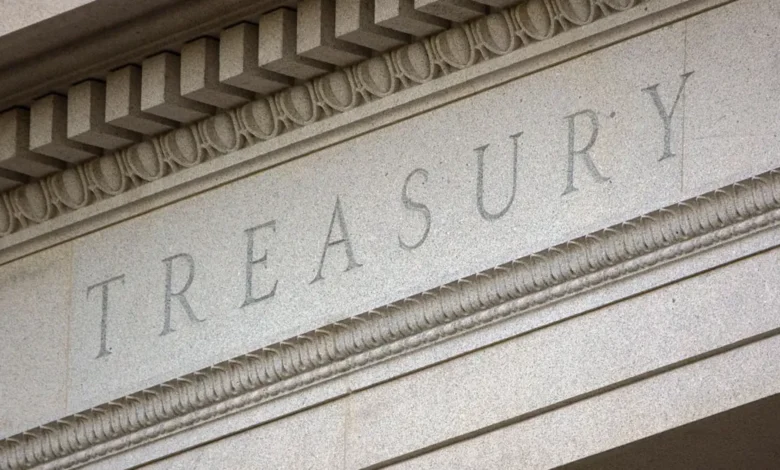Shockwaves in Global Finance: How Tether’s Explosive Growth is Redefining the Treasury Market!

Tether Issuance Moves Treasury Markets: How Stablecoin Growth Is Reshaping Global Finance
The ever-evolving landscape of finance is witnessing a significant disruption, thanks in large part to the emergence and growth of stablecoins. At the forefront of this revolution is Tether, the largest and most notable stablecoin available today. This blog post delves deep into how Tether’s movements and issuance strategy are reshaping treasury markets and global finance at large.
The Rise of Tether and Stablecoins
Stablecoins are digital currencies designed to maintain a stable value relative to fiat currencies or other assets. Tether (USDT), pegged to the U.S. dollar, has emerged as the preeminent stablecoin in the cryptocurrency ecosystem, primarily due to its promise of liquidity and relative stability amidst the volatility often seen in digital assets. By significantly increasing the USDT supply, Tether has fundamentally altered the traditional dynamics of treasury markets.
The launch of Tether in 2014 pioneered the concept of stablecoins, incentivizing other projects by showcasing the potential for digital currencies to provide the stability that many seek in traditional investing. Since its inception, Tether has garnered widespread adoption, with its market capitalization swelling to over $70 billion as of 2023.
Impact on Treasury Markets
The intersection of stablecoins and treasury markets presents a fascinating dynamic. Tether’s role has transitioned from merely a tool for cryptocurrency traders seeking price stability to a fundamental player in the wider financial ecosystem. By creating a digital dollar, Tether has enabled myriad use cases, including secure transactions and sophisticated financial instruments.
Stablecoins like Tether have provided investors with an alternative mechanism to engage in treasury markets. Traditionally, treasury bills and notes serve as safe-haven assets, but with the rising interest in digital finance, Tether’s issuance is now being viewed as an innovative method of enhancing liquidity in these markets. As capital flows from standard financial instruments into stablecoins, the efficiency and speed of transactions are greatly increased. This transformation facilitates more agile trading strategies and improved risk management practices.
Preserving Capital in Times of Crisis
One of the most compelling features of Tether lies in its ability to serve as a refuge for capital during times of economic uncertainty. When traditional markets experience turmoil—such as during a financial crisis or global events like the COVID-19 pandemic—investors increasingly turn to stablecoins. Tether allows them to preserve their capital without needing to liquidate their holdings into fiat currency.
As demonstrated during the pandemic, the inflow of capital into Tether surged as investors sought safe places to park their funds. This trend reflects a growing confidence in stablecoins as viable alternatives to traditional treasury assets. Such instances highlight the transformative power of Tether and similar stablecoins in providing flexibility and stability during financial upheaval.
Institutional Adoption and Regulation
The advent of stablecoins, particularly Tether, has not gone unnoticed by institutional investors and regulators. The increasing adoption of Tether among corporations and investment funds signifies a paradigm shift in how businesses approach cash management and risk exposure. Major companies are considering integrating Tether into their payment systems and treasury operations due to its swift transaction capabilities and the reduced cost of cross-border transfers.
However, with great innovation comes great responsibility. Regulatory bodies are actively assessing the impact stablecoins like Tether have on the broader financial system. Concerns related to consumer protection, market volatility, and systemic risk have prompted discussions around the need for a robust regulatory framework for the issuance and management of stablecoins. Entities like the Financial Stability Oversight Council (FSOC) and the International Monetary Fund (IMF) are now closely monitoring this burgeoning sector, aimed at ensuring stability and fostering trust in digital currencies.
The Global Financial Ecosystem
As Tether continues to gain traction, its influence extends beyond the boundaries of treasury markets and into the global financial ecosystem at large. The growing liquidity resulting from Tether’s issuance is fueling further innovation in financial products based on blockchain technology.
Tether’s ability to facilitate instant transactions, combined with the low costs associated with its use, is reshaping the way businesses and individuals transact across borders. In regions where traditional banking infrastructure is lacking, stablecoins like Tether offer an accessible pathway to engage in the global economy. This democratization of finance is empowering millions around the world, breaking down barriers that previously precluded equitable access to financial services.
Challenges and Future Prospects
While Tether and other stablecoins present significant opportunities, challenges abound. The volatility of the cryptocurrency market can create risk exposure for investors, particularly if a stablecoin loses its peg to its underlying asset. Tether has faced scrutiny over transparency regarding its reserves, which continues to be a primary concern for regulators and users alike.
The future of Tether and other stablecoins hinges on their ability to collaborate with regulatory bodies to establish a secure and reliable framework for operation. Additionally, as competition in the stablecoin space increases—with numerous new projects vying for market share—Tether must continue innovating and ensuring the trust of its user base.
The evolving nature of financial technology means we are likely just scratching the surface. Tether’s impact on treasury markets, global finance, and the traditional banking systems signifies a shift in how we think about and engage with money. As we look ahead, the synergy between stablecoins and advanced financial systems appears more promising than ever.
Conclusion
The advent of Tether and the growth of stablecoins are reshaping the traditional frameworks of finance and treasury markets. As capital flows into digital assets, institutions and individual investors alike are capitalizing on stablecoins’ unique advantages. With a clear path towards greater adoption and potential regulatory developments, the narrative surrounding Tether and its implications on broad financial landscapes are just beginning to unfold.
- Tether’s growth is reshaping the landscape of treasury markets.
- Stablecoins provide liquidity and stability in volatile markets.
- Regulatory bodies are beginning to monitor the impacts of stablecoins.
- Tether is gaining traction among institutional investors.
- The future of Tether and stablecoins will be defined by regulatory collaboration.





